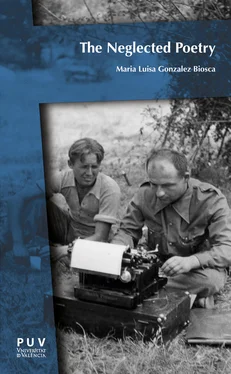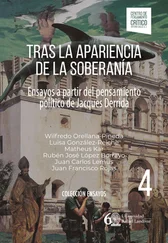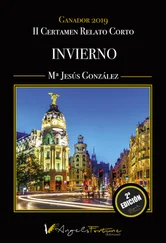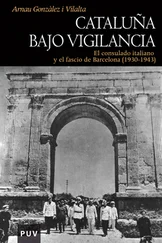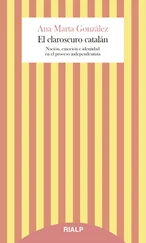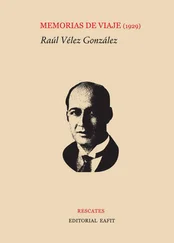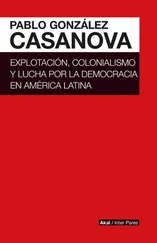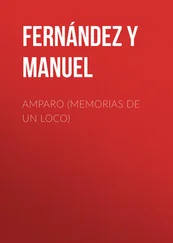Photograph 4.A break, December 1937. John Hunter, member of the machine gun company num. 1 of the Lincoln-Washington. Battalion. Photograph by Harry Randall: XV IB Photograph Collection. ALBA Photo 11-0639. The Tamiment Library and Robert F. Wagner Labor Archives, NewYork.
Photograph 5.Transportation of the anti-tank battery in Ambite, September, 1937. Harry Randall: XV IB Photograph Collection, n° 1233. ALBA Photo. The Tammiment Library & Robert F. Wagner Labor Archive. New York.
Photograph 6.Returning brigadists of the Lincoln Battalion aboard the City of Paris. Hank Rubin standing on the far left. Harold Hoff in the front row far left. Harold Hoff’s collection.
Photograph 7.George Green playing the cello in the interior patio at Huete Hospital (Cuenca). Behind, playing the accordion, Nan Green, his wife and the brigade and German violinist Willi Remmel. Spanish Collection, 32/4/9a. Courtesy Marx Memorial Library & Workers’School, London Foundation.
Photograph 8.Sitting, Monks is the first on the left (Monks, 2012).
Photograph 9.The Republican Government set up an education program for refugee children at Benicassim. Some of these schools were supporterd by international aid and the International Brigades. Photograph taken by Alec Wainman, © The Estate of Alexander Wheeler Wainman, John Alexader Wainman (Serge Alternês), IWM, London, ref. HU33021.
Photograph 10.British nurses of the British Medical Unit at the Poleniño Hospital, (Salas Franco, 2011: 78).
Illustrations
Illustration 1.Pencil sketch of David Lomon drawn by Clive Branson. Clive Branson Collection. Courtesy, Marx Memorial Library & Workers’School, London Foundation.
Illustration 2.Periodical of the XV International Brigade, The Volunteer for Liberty. CRAI, Archive Pavelló de la República.
Illustration 3.Newspaper of the XV International Brigade, The Volunteer for Liberty. Library-newspaper archive Conde Duque, Madrid, microfilm section, film reel 1052/87.
Illustration 4.Poem published in The Volunteer for Liberty , II, 6, Barcelona. February 19, 1938, two weeks before his death during the Aragon retreats.
Illustration 5.The retreats from Aragón’s front, March-April 1938. Bessie (2002).
Illustration 6.Joseph Selligman’s death certificate. RGASPI, Russian State Archive of Socio-Political History. Fond 545/Opis 6/ Delo 985 / p. 7.
Illustration 7.Document property of the author.
Illustration 8.Newspaper of the XVth International Brigade, The Volunteer for Liberty . Library-newspaper archive Conde Duque, Madrid, microfilm section, film reel 1052/87.
Illustration 9. The Volunteer for Liberty . CRAI Archive Pavelló de la República, Barcelona. SCW, publications, V6.
Illustration 10.RGASPI, Russian State Archive of Socio-Political History, Moscow. Fond 545/Opis 2/Delo 58 p. 25.
Illustration 11.Loyalist army and rebel army positions sketch by Monks (Monks, 2011: 130).
Illustration 12.The newspaper of the brigade, The Volunteer for Liberty. Library-newspaper archive Conde Duque, Madrid, microfilm section, film reel 1052/87.
Illustration 13.Cartoon drawn by Deyo Jacobs, American brigadist of the Abraham Lincoln Battalion. Deyo Jacobs illustrates an article by Herbert Kline published in the same issue in The New Masses in July 20, 1937. < https://www.unz.org/Pub/NewMasses-1937jul20-00005?View=PDF>.
Illustration 14.Map of the area controlled by the Lincoln Brigade June 10, 1937. Extracted from The Book of the XV Brigade (Graham, 1974: 69).
Illustration 15.The poem was published three months after the invasion and occupation of Asturias by the rebel army and its allies, the Legion Condor and the Italian fascist troops.
Illustration 16. Boletín de Información de las Brigadas Internacionales , mimeographed in the Jarama trenches. Newspaper archive of Valencia.
Illustration 17. News Bulletin of the International Brigades , mimeographed in the Jarama trenches. Newspaper library of Valencia.
Preliminary. The Neglected Poetry
The First World War was the last European war which was only fought on the battlefield. Eight million soldiers died and there were six million disabled. During the inter-war years, the time between the Great War and the Second World War, there was another war in Europe, called the Spanish Civil War.
The Spanish war was considered an isolated conflict during this twenty-one-year parenthesis of relative peace in a Europe that had made room for four dictators: Adolph Hitler, Benito Mussolini, Antonio de Oliveira Salazar and Joseph Stalin. The Second World War involved more countries than the First World War; its duration and the use of massive new military technology caused nearly seventy million deaths. The First World War lasted four years and took place mainly in the trenches. There were periods when the front stayed in the same position for at least a year. This prolonged wait was sometimes filled with the writing of spontaneous poems or verses which collected the soldiers’ feelings about their experiences at the front. The majority of the soldiers lacked primary studies and there was a high percentage of illiteracy which made it difficult for them to write poems. Nevertheless, there was an important amount of poems written in English (as well as in other languages) by Wilfred Owen, Siegfried Sassoon, Isaac Rosenberg, Thomas, Graves and so on. The majority of them would not be known until many years later because most of their works were not published regularly until the mid-twenties. However, when their poems were released, given their literary and historic value, the poets were not neglected for having participated in that war. Neither their pacifist ideology, nor their satirical themes were marginalised and nowadays they are considered canonical poets in the English language.
When the Spanish Civil War broke out, in spite of the enduring work of the Pedagogical Missions and the impulse for public schooling during the Republic, the illiteracy rate among the native population was extremely high. Langston Hughes explained this in his book Escritos sobre España (2011). For example, he said that the kitchen head at the Albacete base had problems to make the kitchen work, because what the brigadists wanted was to fight, not to cook, and the majority of the Spaniards could neither read, nor understand the orders, nor the menus.
This has meant a double task for Louis who speaks little Spanish. He evidently depends on an interpreter. However as many of the kitchen workers did not know how to read nor write, writing down the orders and making lists of menus was impossible at the beginning.
Out of 27 cooks and helpers, only 7 knew how to read and write and therefore, Louis organised classes for them. After five months seventeen have really learned to read in their own language, Spanish. Due to this achievement, the U.G.T trade union, to which the kitchen workers belong to, have congratulated Louis in an official letter. (Hughes et al., 2011:80, the translation is ours).
During the war and in spite of the difficult conditions, the Alliance of the Antifascist Intellectuals for the Defence of Culture, in which the majority of the poets from the Generation of ‘27 participated, developed a project of literary diffusion which materialised in El Mono Azul, 1among other activities.
Читать дальше
